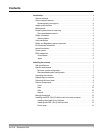
A-61514 September 2004 3
Preparing documents
for scanning
• A batch of documents to be fed into the scanner must be arranged so that
the leading edges of all documents are aligned and centered under the
automatic document feeder. This allows the feeder to introduce documents
into the scanner one at a time. Documents must be positioned face down
for scanning.
• Staples and paper clips in documents may damage the scanner. Remove all
staples and paper clips before scanning.
• Torn, damaged, or crushed pages can be transported successfully through
the scanner. However, no scanner can transport every possible type of
damaged paper. If in doubt about whether a specific damaged document
can be transported through the scanner, place the document in a clear
protective sleeve. Sleeves should be manually fed, one at a time, folded
edge first, while lifting the gap release lever.
• When scanning documents in a clear protective sleeve, the input tray guides
must be adjusted to accommodate the width of the sleeve.
NOTE: Kodak scanners have been tested with a range of documents that
represent the broad spectrum of document types found in the most
common business applications. Optimal scanner performance is
achieved when scanning documents within the recommended
document specifications. Scanning documents that are outside of
these specifications may lead to undesirable results in terms of
scanner reliability, image quality, and/or consumable life.
Recommended documents The following chart lists the recommended document attributes.
Materials • Virgin and recycled papers
• Photographic papers
• Clear protective sleeves meeting the size and
thickness requirements in this section
Paper Types •Bond
• Laser
•Inkjet
• Offset
Paper Weights The document feeder handles a broad range of paper weights from 50 to 200 g
(9 to 110 lb.)
Minimum Document Size
(Width x Length)
8.9 x 6.4 cm (3.5 x 2.5 in.)
Maximum Document Size
(Width x Length)
29.7 x 43.2 cm (11.7 x 17 in.)
Paper Inks NOTE: All inks on the paper must be dry before scanning is started.
• Standard offset printing
• Inkjet printer
• Thermal transfer
• Handwriting inks
Correction Fluids NOTE: All correction fluids on the paper must be dry before scanning is started.
• Liquid Paper
®
•Tipp-Ex
®
• Wite-out
®
• Other, similar correction fluids
Document Batch Height
for Automatic Feeding
When feeding batched documents, the maximum height of the batched documents
is 10.2 mm (0.4 in.) or approximately 150 sheets of 60 g (16 lb.) paper.


















